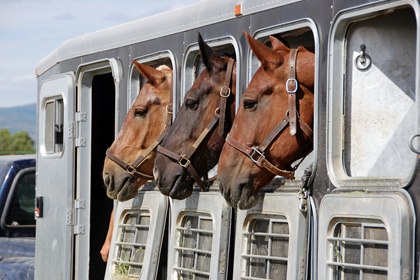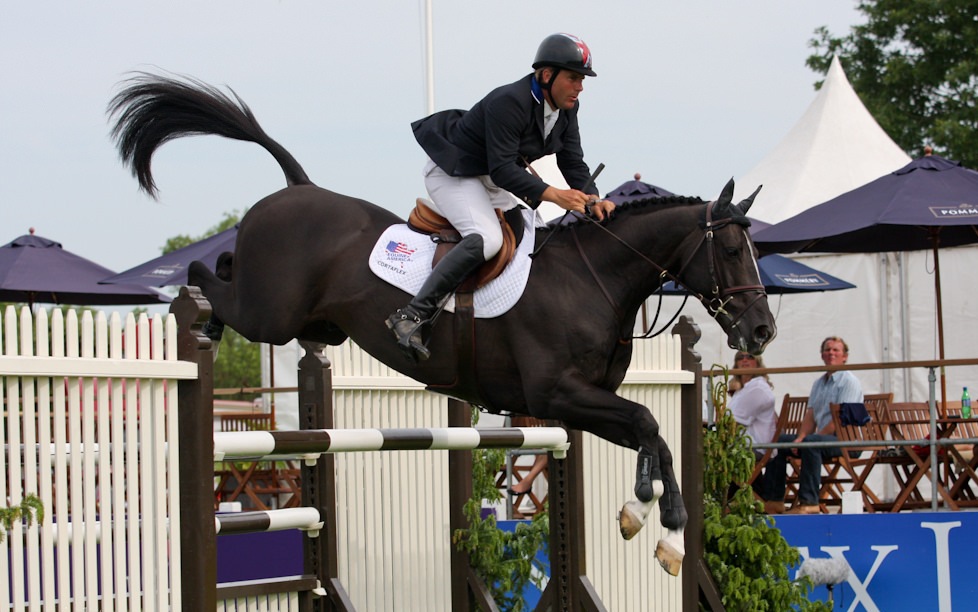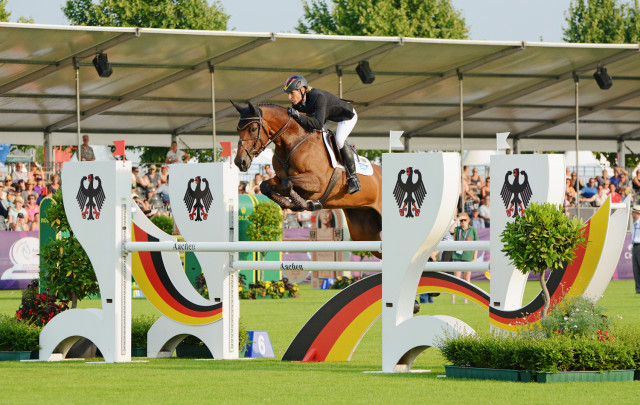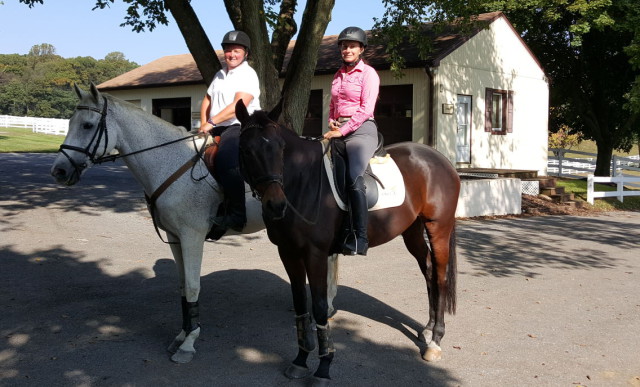 How well do you know your horse trailer? Photo from TheHorse.com and Photos.com
How well do you know your horse trailer? Photo from TheHorse.com and Photos.com
Unless your riding plans involve staying on your farm, you will at some point need to trailer your horse(s). Whether you’re heading down the road to ride in a clinic, two hours to a show or all the way to Florida to escape winter, here are some tips to help prepare you and your horse.
Be sure that your trailering set up is suitable
I always like to think of emergency situations. For example, IF the unthinkable happened and some impatient genius was to pull out in front of you, could your vehicle handle an emergency stop? Yes I’m calling him/her a genius as his/her mathematical and comprehension skills must far exceed mine if they conclude that they will be safe in their Prius should they find themselves in a collision with a 6-horse trailer filled with tack.
If the weight of your trailer exceeds the ability of your vehicle to control, it’d be worth upgrading your vehicle or downgrading your trailer. It’s import to ensure your brakes and lights are working EVERY time you drive. It’s quick and easy to do.
It’s also worthwhile giving your trailer a good going over once every 6 months. Check the boards under the mats, check the tyres, check your electrics etc. Obviously your mechanic can do this but it’s important to have a working knowledge of simple maintenance yourself.
Setting up the trailer
Full haynets always accompany my horses wherever they go. Obviously it’s good for them to eat but the nets can also help keep them entertained. Fresh bedding on the floor improves comfort and stability. I travel with some fresh water as well.
Travelling
Most of my horses are well accustomed to travelling and are comfortable with loading and unloading. However on the odd occasion I get one who is new (or downright unwilling, hello Vinny!) to trailering, I take the time to make sure the horse fully understands how to get on and how to get off.
Typically my horses are in a 6 horse trailer with 5 of their favourite or least favourite friends. For this reason it’s handy to have a working knowledge of how they interact with each other.
For example, Collection Pass can travel next to anyone and is a calming influence. Civil Liberty is at the other end of the scale and is allowed minimal contact with the other horses as he’s not super friendly. Buckharo only likes travelling facing forward and on the passenger side.
Paying attention to these nuances helps the horses arrive a bit happier, a bit more rested (particularly if they’re NOT next to Lib..!) and less likely to be injured.
After many years of travelling with many horses and using different methods, I’ve found the horses are most happy if I drive straight through to the destination without a break. They’re offered water every 4 1/2 hours when I stop to refuel. The horses find it harder to stop and settle into a new place, only to be packed up again the next morning.
I learned to drive animals from an old farmer who had spent his life driving horses and cattle. He instilled in me the importance of giving the ‘stock’ a smooth ride by carefully negotiating each turn, speeding up and slow down as gradually as possible. This makes for an easier ride.
I’m also a stickler for constantly observing my surroundings. I’m forever checking the rearview mirrors and predicating what the cars ahead of me are doing. This goes a long way avoiding accidents.
Protection
For as long as horses have been transported there have been many and varied opinions on how best to protect them physically. I’ve used every variation from wrapping to shipping boots to nothing at all.
Shipping boots are the easiest, most fool proof method of providing protection. Anyone can put the boots on safely and they definitely prevent minor injuries. The drawback is that ill fitting boots can annoy the horse and create more problems than solve.
Wrapping needs to be done with expert hands. The most nerve wracking of all is travelling without any protection. I’ll do this with young horses who are just learning as I find shipping boots tend to annoy them. I know of many high value racehorses who regularly ship, by both road and air, without any boots at all.
The most important consideration is “Am I making the horse more or less comfortable?”, for a comfortable horse will travel quieter and more safely than an uncomfortable one.
Arriving at your destination
If I’m travelling to a show where I’m stabling, I will leave the horses on the trailer until we’ve set the stalls up with bedding, hay and water. I find this the quickest and easiest way to settle the horses as once they enter their stall it’s ‘theirs’ and they can roll, jump about (Liberty), weave (Liberty), eat and drink without interference from us.
If I’m stabling at a show then I’ve typically driven a fair distance so I’ll place the horses hay and feed on the ground to encourage them to get their heads down.
If I’m travelling to a day show, the horses stay on the trailer unless they’re being tacked up and ridden. I find they’re happier and safer on the trailer.
If I’m travelling a long way, i.e. south for the winter, I try to plan my trip so I arrive at lunch time. This allows the horses to go out in a field and stretch their legs. The next day I hack them then they’re ready to go to work the following day.
If you follow my advice it’s important to remember that the horses I take long distances are quite experienced and accustomed to travelling. If your horse is inexperienced I’d be a little more conservative.
Lastly, don’t forget your travel documents!
Disclaimer: As with all of my tips, this merely my advice based on my own experiences. I’m not a mechanic and each state has its own laws on transportation — take the time to check into them. Not sure “but Kate Chadderton told me it was ok” would go over well with your local policeman…!





































